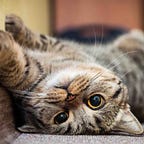How do sports bookmakers make money?
Sports betting had been around for decades, football being one of the best sports to bet. Many sports bettors fall into the trap of thinking that they can beat the bookmaker with their sports knowledge, but little do they know that bookmaker has a natural advantage, they called it the house edge or vig, which you can consider as a fee charged by bookmakers for accepting the bet. Different sports leagues and betting types have different house edges, today I will show you how to calculate the house edge and will use a simulation to show you exactly how bookmaker profits from it.
The bookmakers are always one step ahead of the bettors. If you look closely at the price, the bettors cannot make money by placing bets on both sides, but the bookmakers can make money from being on the right side. The odds offered by the bookmaker do not reflect the true probability of the match outcome. There is a marginal difference between the true probability and the odds offered, this is what gives the bookmaker an edge over the bettor.
Goal Line betting (Over/Under)
Goal Line betting is the betting of the total number of goals you think will be scored in the match by both teams, is it also commonly called over/under.
This is an example of the odds offered:
If you bet $100 on over 2.5 goals and the result is 3 goals and above, you will get back $161, else you lose $100.
If you calculate the probability:
You will get a probability of 105.6%, which means the bookmaker has a house edge of 5.6% for this match. What does this mean? This indicates that if bets are evenly distributed between the two options, the bookmaker will in theory obtain a margin of 5.6% no matter what is the outcome of the match! Of course in reality bets will never be evenly distributed between the two options, that’s why after bookmakers open with these odds, they will adjust the odds in favor of the side which they want the bettors to bet. For example, if the bookmaker wants the bettors to bet on over 2.5 goals, they will increase the over odds to attract more bettors to buy over. The details are much more complicated and will not be covered here.
Bet simulation
Here is an example of 10 random bets placed on the match above.
Bet side & amount — the amount of money bettor placed on that side.
Payment to player — the accumulated payment to player depending on the final result.
Total deposits — the total number of money collected.
Match outcome — how much will the bookmaker earn given the final result.
You can see after 9 bets, the bookmaker is able to make a profit regardless of the outcome of the match. The more bets collected, the easier for the bookmaker to have a stable profit.
We run the above simulation for 1000 times, each time we place 10000 bets, with a 50% chance of landing of either side, and each bet value is between 0 to 100. This is the distribution plot of 1000 simulations:
You can see the bookmaker’s average winning is rather stable over 1000 simulations. The average money obtained by bookmaker per simulation is $523,864.72, and the average worst case of the bookmaker’s profit is $26,379.04 per simulation, with a standard deviation of $781.16. The minimum margin of the bookmaker is around 5.04%. This result is consistent to what we expected the bookmaker to earn previously.
Conclusion
十赌九输
There is this Chinese proverb which translates to the house always wins. The bookmaker’s odds does not reflect the true probability of the match outcome, they have a natural advantage over the bettors. Although some bettors can win from bookmakers, but bookmakers will make an overall profit eventually. The only way to beat the bookmaker is either to come up with an even more accurate prediction to overcome the house edge, or to place bet when the bookmaker’s odds are off. I’ll explain more details in the next article.
